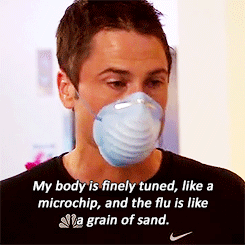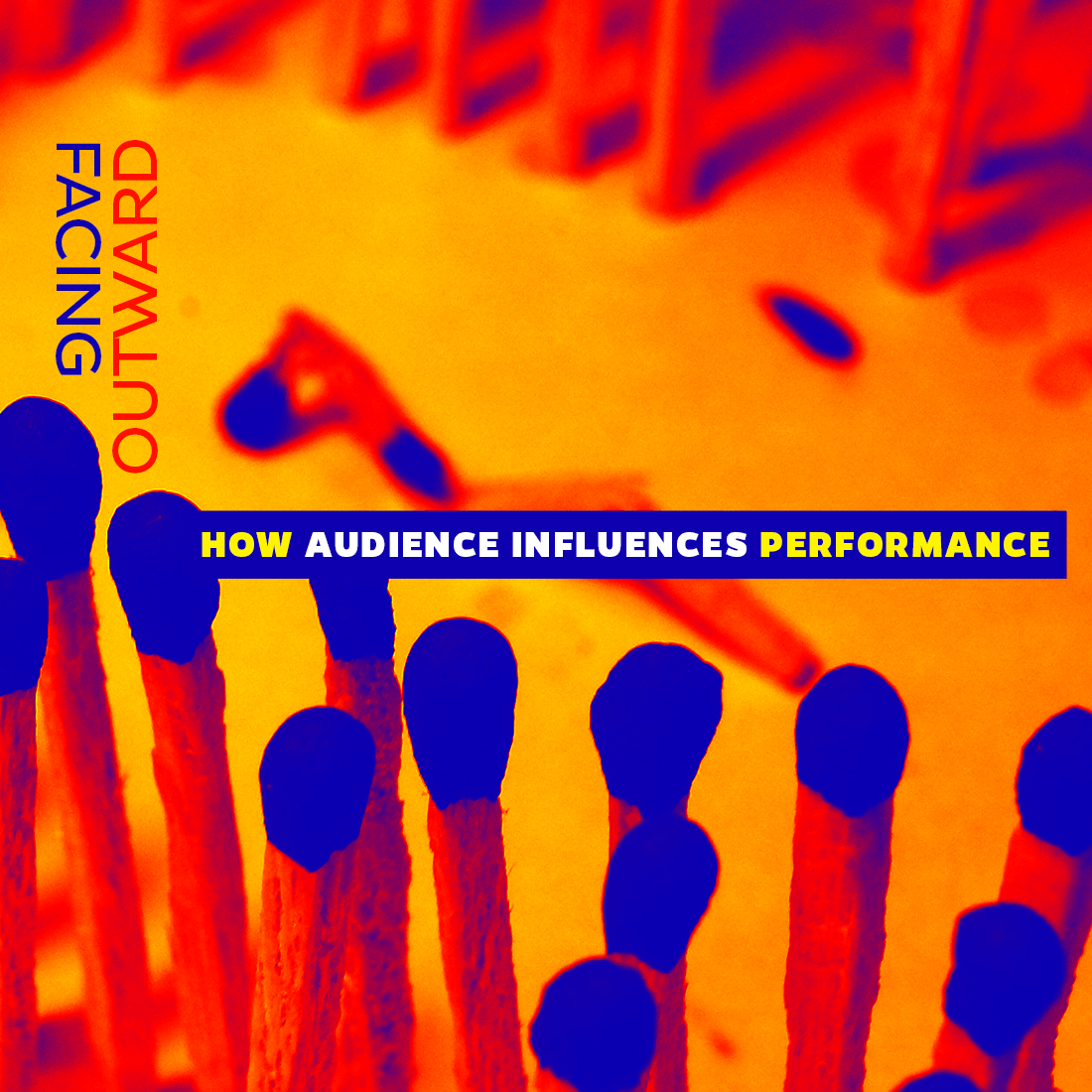CALEB LEWIS
Try to recall the last time you competed in a sport or a game. Did you do anything special before it started, just for you? Maybe you made sure to wear a particular item of clothing. Maybe you repeated a mantra or said a prayer. Maybe you made sure to do a specific warm-up. Maybe you did something altogether different. Regardless of what you did, chances are you had some sort of pregame ritual. Congratulations! You are an initiate in the rites of the church of sport.

Sport is a religion of sorts, thick with meanings and morality tales. Each sport has a strict set of codes and rules. Their rites are performed regularly following a prescribed calendar. And the performance of sport represents more than what’s actually going on. The baseball season is the cycle of life and death: Spring Training is the new life and hope of birth. The summer season is the heat of life at its peak. Autumn is the falling away of the inessential, as teams are eliminated, and the end is neared. While the winter — the offseason — is death, when there is stillness and rest until the next life begins. Often, that’s the key to ritual: it’s symbolic and its meaning and value exist beyond the surface act. We read into the tiniest details, taking these small narratives and connecting them to grander ones. We connect sport to our lives, our identities, our countries, and our religions. Indeed, sport provides us with our modern mythology: ready-made good guys to root for and bad guys to boo, a hierarchy of power, a constant war for supremacy and honor, and, perhaps most importantly, it provides us our heroes, the athletes. If sport is a religion, then athletes are our priests and high prophets, the ones who observe the rites most closely. But these demi-gods also have rituals of their own, rites to help them in their eternal wars against each other.
The Fates Decide
Few careers bring uncertainty into contrast as much as that of the athlete. Many athletes have little to no control over the course of their careers: which games they play, what role they play on the field, which teams they play for, and what injuries they receive. And within a game athletes may feel as if they have less control: the ball may take a weird bounce, their cleats may slip on a patch of ground, the wind might keep a ball in bounds. In this landscape, an athlete may feel buffeted by the winds of fate. But they are not powerless.
Wade Boggs, the Hall of Fame third baseman, had a notoriously precise set of pre-game rituals in which he would field 150 ground balls, take batting practice at exactly 5:17 P.M., run sprints at exactly 7:17 P.M. (for a 7:35 P.M. game), and write the Hebrew symbol for “life” in the dirt before going up to bat. But the ritual he’s most famous for is eating chicken before every game. The short version of the story goes that, early in his career, Boggs noticed he would hit better in games after eating a meal with chicken. He stuck to his pre-game poultry diet ever since. Perhaps, Boggs kept this routine so that there was some stability and control in his life; he was the one who decided what he did, when he did it, and how it was done. And, concerning the chicken, the sense of control it provided connected directly to his performance. Ritual gave him command over his life.
8 Strange Athlete Superstitions | Source: © BuzzFeedVideo/YouTube
Other athletes give control up to some higher power, turning to the rituals that serve their conception of the grander scheme of the universe. Prayer and other religious rituals become facets of many athletes’ lives, and the religious athlete is an archetype that we find throughout the world. We remember Tim Tebow for his act of kneeling in prayer more than his actual on-field ability. Prayer was also a central part of the life of Muhammad Ali, who would pray before fights.
This sense of outside forces affecting the game extends to areas not explicitly religious in nature. For instance, let’s look at the protocol when a no-hitter is in the workings in a baseball game: NO ONE TALKS ABOUT A NO HITTER! NO ONE EVEN THINKS OF SAYING “NO HITTER” OR “NO-NO” OR ANY VARIATION THEREOF! AND THE PITCHER IS TO BE LEFT COMPLETELY ALONE! Breaking any of these rules before the game is over will ruin the no-hitter. No one can say for certain why; that’s just the way the cookie crumbles. This set of sacred rules exists along the same lines as having a lucky shirt or a pair of lucky shorts. There’s a call to some lower order unknown power to positively affect the game. If the athlete isn’t the one in control, then something has to be, right? It could be luck, it could be a god, or just the spirit of the game itself, but it’s comforting that the result might not be random chance or the athlete’s responsibility.
A Game of Inches

Rob Lowe as Chris Traeger in NBC’s Parks and Recreation | Source: Giphy
Serena Williams wears the same pair of socks throughout a tournament. A random bit of knowledge, but also enlightening. Athletes at the highest levels of their respective sports aren’t separated by much. With the advent of sports medicine, this difference is made up less by physical ability. An athlete’s ability to analyze and make a decision — her sport’s intelligence — becomes the deciding factor. There’s no time to think, she moves with instinct, and her mind working overtime. In these situations, the smallest distraction can cause an athlete’s mental game to crumble. To paraphrase Parks and Recreation’s Chris Traeger: athlete’s minds are finely tuned, like a microchip, a grain of sand could destroy it.
These distractions can take many shapes, including uncomfortability. If an athlete is busy thinking about how her shoes fit, that’s bandwidth that’s not being used on the game. That’s why many soccer players wear the same model of cleats for years, to the point that cleats are identified with who wears them. This may explain why Williams wears the same socks throughout a tournament: she’s chosen a pair and become comfortable with them. If she changes socks, she has to adapt to the new pair. And in a game of inches, her loss of focus can be the difference between winning and losing.
If sport is a religion, then athletes are our priests and high prophets, the ones who observe the rites most closely.
Can’t Stop Won’t Stop
If athletes are the priests of sports rituals, then Rafael Nadal is the Pope. He has an incredible amount of rituals, too many to name them all, but here are some of the highlights: he takes a cold shower right before every match, he always carries one racket onto the court with him, he never steps on the lines (when not in the middle of a rally) and only crosses lines with his right foot, he ensures his socks remain the exact same height through the match, and he always has two water bottles which he places in a line and with the labels facing the side of the court he plays from. And that’s only some of his rituals. Some have pointed to this behavior as indications of OCD tendencies, which brings me to my next point. Obsession.
Role of Ritual & OCD in Sport – Feat. Rafael Nadal | Source: InterestMedia/YouTube
Athletes can be obsessive over the rituals they perform. It’s this same obsessive nature that got them to where they are. Their obsessiveness expresses itself in these rituals, but it also expresses itself in hours and hours of practice. Athletes will work on something, a stroke, a shot, a kick, over and over and over again. Repeating it until they get it right. And then repeating it until they get it right consistently. And then they repeat more. Their obsession has driven them to the highest level of performance.
Jonny Wilkinson is obsessed with the perfect kick. The legendary English rugby player would practice kicking for hours after regular team practice; practicing every conceivable type of kick until he was satisfied, which he never was. And then he would practice with the other foot. Even after retirement, he continues to practice this way. His particular rituals? He would never warm up in his England jersey and he would always wear the same t-shirt underneath his jersey. Oh, yeah, and then there’s the stance. Perhaps the most identifiable kicking stance in all of rugby: a slight squat, legs together, and hands cupped. Without fail, that’s how he planted himself.
Kicking king – England’s Jonny Wilkinson | Source: Six Nations Rugby/YouTube
In a way, these obsessive rituals are a fight against obsession itself. If athletes can get themselves to obsess over something other than their sport even for a second, it’s a moment of relief. The more they focus on the game, the more time they have to become tense. But ritual provides a spot of focus to clear the mind. Look at NBA players shooting from the free throw line. You’ll notice that many have a particular set of movements they perform before shooting. It prevents them from seizing up under the pressure and choking. They’ve recognized their blessing, their obsession, can also be a curse. And so they have turned the curse back on itself, allowing them to clear their mind in search of flow.
Like Mike
LeBron’s Chalk Toss | Source: © NBA/YouTube
Sport is full of hero worship. How many young athletes have attempted LeBron James’ chalk toss? How many celebrate like Usain Bolt? How many strike in Cristiano Ronaldo’s free-kick stance? This drive to emulate is so powerful and well known that in 1992, Gatorade produced a commercial with the tagline “Be Like Mike” to sell their drinks. The argument: Michael Jordan drinks Gatorade and he’s a great athlete, so you should drink Gatorade to be a great athlete. We see this exact idea developed to its zenith in the 2002 film Like Mike. In this film, a young boy, Calvin Cambridge, finds a pair of Michael Jordan’s old shoes. After the shoes are struck by lightning (because that’s how these kinds of things work), they give Calvin the basketball ability of Michael Jordan. Though in our everyday life we may not expect that wearing an athlete’s old shoes will magically make us great, we do think that if we wear a pair of Adidas Messi 16.1, a cleat designed for and worn by Lionel Messi, then our own abilities will be improved.
“Be Like Mike” Gatorade Commercial | Source: bigwayne84/YouTube
It’s not just what athletes eat or what they wear that we imitate. Sure, athletes become role models for kids, but we also look to their rituals. Think about the 1993 film Cool Runnings. In this, Derice, the captain of the Jamaican bobsleigh team, replicates the Swiss countdown, which they do in German in the film. What this film makes clear is that emulating your heroes doesn’t necessarily mean you’ll become like them. Counting down in German does not a champion bobsleigh team make. That is to say that copying the surface acts can’t make up for skill level. By only copying an athlete’s outward ritual, we overlook the years of disciplined practice that got her to that point. We’re pretending to greatness without working for it.
[Athletes’] obsessiveness expresses itself in these rituals, but it also expresses itself in hours and hours of practice.
The famous Cruyff turn | Source: Bob Marley/YouTube
However, there are ways in which emulating a hero can help an athlete. Johan Cruyff is famous for many things in relation to soccer, but perhaps not more than for the “Cruyff Turn.” It may go without saying that many soccer players have since tried to learn this move, and I’m sure many will into the future. The Cruyff Turn is useful in a game when taking on defenders. Furthermore, to master it, players have to practice and practice to get it just right. This practice improves their technique, giving them a better touch on the ball, while also improving the way they think about movement and space on the field. Emulating the techniques and discipline of an athlete — the actions that go beyond the surface level — can actually help a young athlete grow. These young athletes work for greatness instead of just copying it.
Confidence is the foundation of the athlete’s mental structure. When there’s doubt, the building collapses. But when there’s confidence, the building can withstand almost anything.
There’s Gold in Them Thar Hills
While athletes may be earnest about their rituals, others have found ways to profit off of them. We’ve already looked at Gatorade’s “Be Like Mike” commercial, and really, most commercials related to sport seek to exploit athletic ritual. If not explicitly to copy a particular athlete’s ritual, sports commercials call us to join the rites of sport, whether we’re athletes or fans. They encourage us to connect to the narratives of sport. These commercials promote the use of athletic rituals to amateur athletes. They suggest that young athletes should want to compete at their highest ability, and to do that they must establish a ritual, specifically a ritual that involves the product that is being sold. There exist many products that are purported to increase athletic ability. Some of these products are based on scientific studies, while others… not so much. Among these athletic products are magnetic necklaces and energy bracelets. The former claims to use magnetic therapy to increase physical ability while the second claims to use “holographic technology” for the same purpose. And seeing as Phiten, one of the producers of the magnetic necklace, had sales around $200 million in 2009, it’s not just a few athletes buying.
Do Power Bracelets Work? | Source: © WLWT/YouTube
Athletes, professional or amateur, are always trying to give themselves an edge. Any product that claims to do that may be worth the try, especially if there is little risk. Companies know this. Many times, it doesn’t matter if the product actually works, just as long as the athlete thinks it does. Studies on magnetic bracelets and holographic bracelets indicate they don’t improve performance beyond the placebo effect. But there it is, we’ve found how these products can be helpful. The idea that a product works gives the athlete confidence. If an athlete is worried or nervous, she second guesses every decision and works from a place of tension. Confidence causes her to relax just a little bit more, allowing her to make decisions faster and move just a bit quicker. Confidence is the foundation of the athlete’s mental structure. When there’s doubt, the building collapses. But when there’s confidence, the building can withstand almost anything. If a product creates confidence for an athlete, even if it’s just a placebo effect, then it still has value. It’s up to each athlete to decide if the price is worth it.
The Circle of Life
Sporting games end just like everything else in life. Thankfully, win or lose, there’s always hope for next time. And that’s the point of ritual: it provides hope. Hope for something good to happen. Hope that we’ll be ready when we need to. We’re lucky: sports are eternal, there’s always a next time. Another opportunity to hope. Athletes, week in, week out, for years, have to be prepared for this. They have to be consistent in their preparation. Ritual is their tool to keep themselves at the peak. It provides them anchors and footholds to keep them sane and orient them in their landscape. In a field with enough meaning to be a religion, it’s only natural athletes would turn to ritual as weapons in their holy wars.





